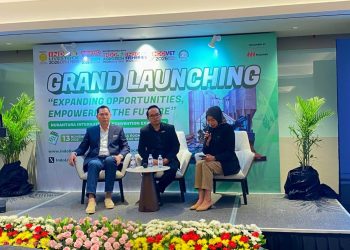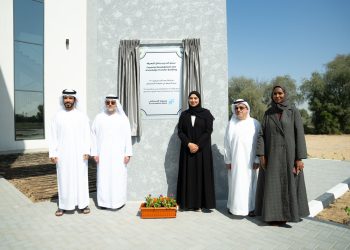Just over a decade ago, the agricultural sector was often dismissed as one of the least digitised industries in the world. It stands out as one of the most impactful case studies for successful AI implementation. This transformation wasn’t driven by cutting-edge AI tools alone—it was rooted in the systematic and standardised collection of high-quality data.
Construction professionals across the GCC are now looking to bring similar innovation into their own sector. Across GCC countries, efforts are underway to digitised construction workflows and embrace advanced AI-assisted tools. According to a PlanRadar global study, 97% of professionals expect their company’s digital investments to increase in the coming years. This signals a clear appetite for transformation and underlines the need for foundational readiness.
Agriculture’s Data Journey
The turning point in agriculture’s transformation was not the deployment of AI itself but the groundwork that preceded it. The sector’s real breakthrough came when data began to be collected systematically—from soil conditions and weather patterns to seed distribution and irrigation timing. This shift enabled AI algorithms to detect patterns, provide accurate predictions, and automate high-precision tasks.
A standout case is Agrifac, a European company renowned for its precision farming systems. Their NEED Farming platform integrates real-time inputs from GPS tracking, crop sensors, and environmental monitors. With that level of synchronised and standardised data, the system can apply fertilisers, pesticides, and water down to the level of individual plants. What makes this level of precision possible is the fact that all data sources are aligned and processed uniformly.
Farmers using Agrifac’s systems have achieved up to 20% reductions in fertiliser use, up to 70% reductions in other chemical inputs, while boosting yields by up to 50%. Their spot-spraying technology has even recorded over 90% savings on herbicides. Such dramatic efficiency gains were made possible through structured data that AI could trust and learn from.
Translating Lessons to the Construction Sector
The construction industry is already exploring tools like drones, digital forms, sensors, and AI-enhanced planning systems—but many companies are still missing the foundational layer needed to unlock their true value.
In construction, fragmented and inconsistent data often means decisions are delayed, tasks are duplicated, and costly rework becomes the norm. This is especially true in large-scale, multi-phase projects where multiple teams interact and update records across different platforms.
Yet in the GCC region, where mega-projects like NEOM in Saudi Arabia or the UAE’s smart city initiatives are pushing the boundaries of technology integration, the need for a digital-first, data-driven approach is becoming more urgent than ever. For instance, GCC big data in construction was valued at approximately USD 253.5 million in 2024 and is expected to grow to approximately USD 587.9 million by 2033, according to IMARC Group. This indicates strong demand for technology and data tools in regional construction. IMARC Group
Another relevant figure: in the UAE, the construction market size is projected to grow from USD 42.75 billion in 2025 to around USD 52.66 billion by 2030, at a CAGR of about 4.2%, signalling increasing scale and scope for digital and AI tools to make an impact. Mordor Intelligence
Building AI Readiness Beyond Tools
To move towards AI-ready construction sites, companies must begin by ensuring data is captured with consistency, completeness, and accuracy. This means moving away from paper-based reports, informal logs, or isolated digital records, and adopting solutions that provide centralised, cloud-based data environments. When updates are synchronised instantly, and insights are visible in near real-time, teams can act faster, avoid duplication, and reduce risk.
Just as the farming sector invested in upskilling its workforce to use digital mapping and drone surveillance tools, construction companies should train their teams on proper data collection practices and digital system usage. Supervisors, project managers, engineers, and subcontractors must all be familiar with how to input the right information, validate it, and use digital systems effectively. In the GCC, where labour diversity and large-scale projects are the norm, investing in multi-language, intuitive, and mobile-ready digital tools can dramatically improve adoption rates and accuracy across teams.
Realising the Potential of AI in Construction
Once the foundations of structured and standardised data are in place, AI-powered tools can automatically detect design conflicts and optimise layouts during the planning phase. They can analyse historical project data to provide dynamic cost and schedule predictions and adapt in real time based on weather conditions or on-site progress. AI can also be used to flag safety hazards, improve sustainability through smarter resource management of materials and waste, and improve energy usage by tailoring building systems to actual usage patterns.
These advantages allow AI to become an enabler of better decision-making at every level of a project—from day-to-day operations to long-term asset planning and assessment of sustainability performance.
From Data Collection to Strategic Advantage
As national visions such as Saudi Vision 2030, the UAE’s Centennial 2071, and Qatar National Vision 2030 continue to promote smart infrastructure and technology-led development, the construction sector in the GCC must position itself not just to follow but to lead.
The transformation seen in farming is a powerful reminder: real AI value is not in the technology itself, but in the clarity and consistency of the data that feeds it. If GCC construction leaders embrace this lesson and build a strong data infrastructure today, they will set the stage for smarter, faster, safer, and more profitable projects tomorrow.























